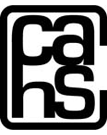Comments can be made by clicking on “Comment” found under each Blog page item. Accepted comments will be published.
A Speakers’ Panel of former CCAHS people can be included in any event related to health legislation and policy, consumerism, and union efforts to improve workplace safety or any related topic. Feel free to contact us for details.
A Message From Dr. Frank Goldsmith, Director
In and around 1974 there were the best and worst of times. In the worst side there was an economic and financial downturn along with the oil cartel supply gouging create large-scale unemployment.
For the CCAHS, that down turn created an opportunity to expand it already successful consumer advocacy into the field of worker safety and health.
New York State, federal and state funding for worker and trade union oriented education was stalled or put on hold. The CCAHS reached out to Cornell University School of Industrial and Labor and offered its Director of Occupational Health Programs the opportunity to launch CCAHS’s Labor Safety and Health Institute (LHSI). Frank Goldsmith agreed to this offer.
Health Policy and Occupational Health
The first step was to bring workers’ health and safety issues before the CCAHS’s Board of Directors. The second step was as important: to get that Board’s approval to establish the Institute. There was overwhelming support for this direction.
And, through its three to four years, the LSHI, was able to bring important issues before public health, trade union health benefit and pension administrators who were on the CCAHS Board. No other previous board ever had that breadth of expertise and activist members.
The Consumer Commission on the Accreditation of Health Service’s
‘Labor Health and Safety Institute (LSHI)’
Federal Golden Age
The economic and financial crisis of 1977 did not curtail the work of the U.S. Department of Labor’s two main sub agencies: The Occupational Safety and Health Administration [OSHA] and the Mine Safety and Health Administration [MSHA]. The Environmental Agency was also doing good work to protect workers.
The Jimmy Carter Administration was a mixed bag, but for domestic policies, following the failed policies of both Richard Nixon and Gerald Ford, it did some very good work. Most of all, this administration allowed OSHA and MSHA Administrators to do their work.
OSHA regulations were being updated and established almost daily. The results of federal support for independent scientific and medical research of toxic and chemical hazards ended up on OSHA regulatory schedules. After proper review, many safeguards were enacted or incorporated into existing regulations.
The momentum for these changes came from the heralded 1960’s activism.
It was federal and in some cases, states’ initiatives which were picked up by the CCAHS’s LSHI and reported to consumers and in particular labor organizations.
Workers’ Compensation and Disability
The passage of OSHA in 1970 carried within it a long-standing demand to bring all 50 state-based workers’ compensation laws under the national federal list of safety and workplace standards. The National Commission on Workers’ Compensation (NCWC) met for seven (7) years and established that federal bar which all State programs had to reach.
This was historic.
In New York State, this meant major changes in “workers’’ compensation laws. The Board fully agreed that CCAHS pay attention to this aspect of labor policy.
Trade union fund administrators were particularly anxious to turn loose the LSHI to pay attention to reforms.
The LSHI leadership met with key benefit fund administrators to learn and report on the changes that fund directors deemed important.
LSHI Reports to the CCAHS Board of Directors
The Director of the LSHI reported on a regular basis to the CCAHS Board on policy issues developing on federal, state and local issues. The chair of the Board, Don Rubin, forcefully supported the policy ideas of the LSHI and called on members of the Board to actively ask questions and recommend directions for their LSHI. This promoted the interaction needed to make the work of the LSHI all the more important and effect.
LSHI Workbook Guides
Over the period of the LSHI, two Workbook Guides were produced to be used by trade union educators across the country. Those LSHI documents and others are included in this site.
